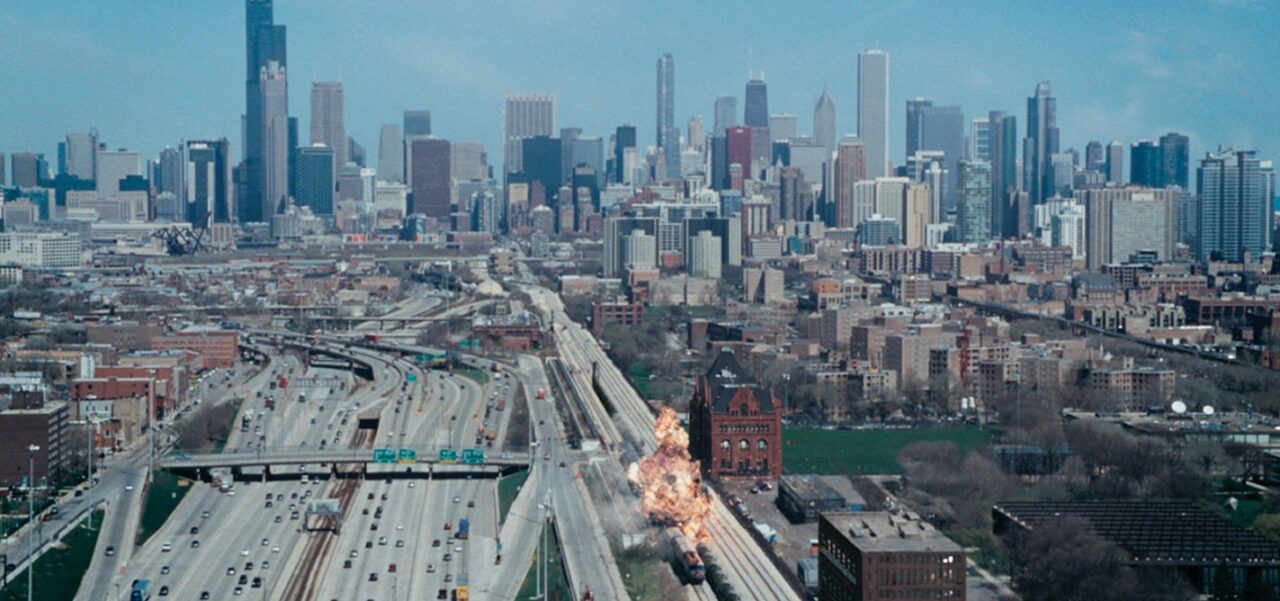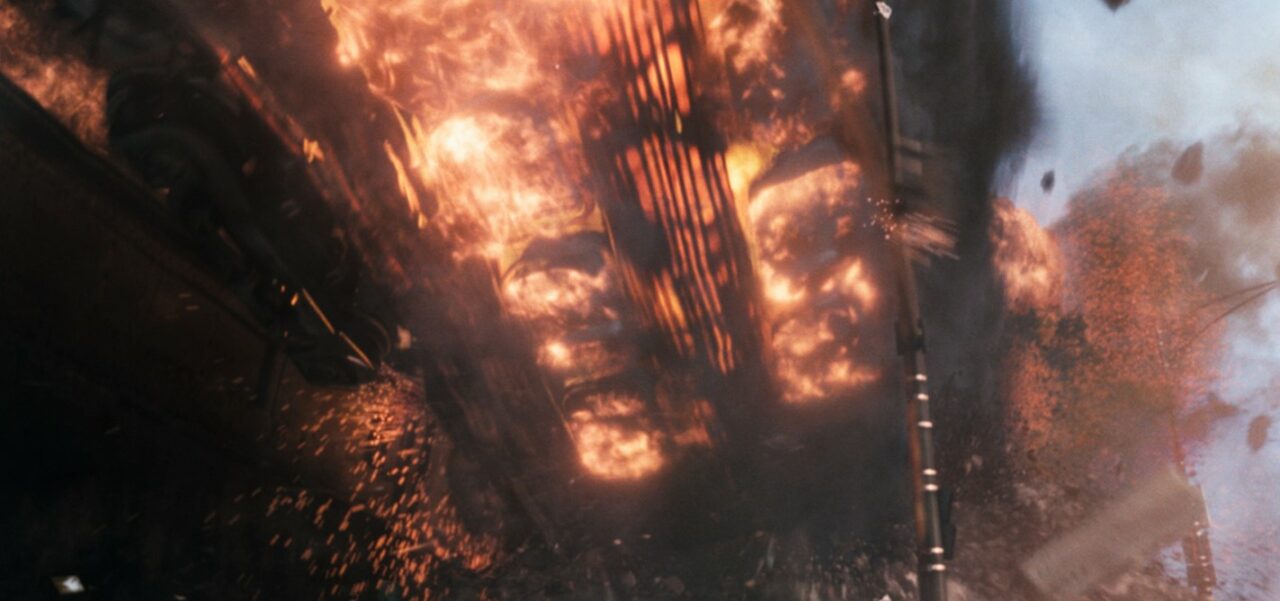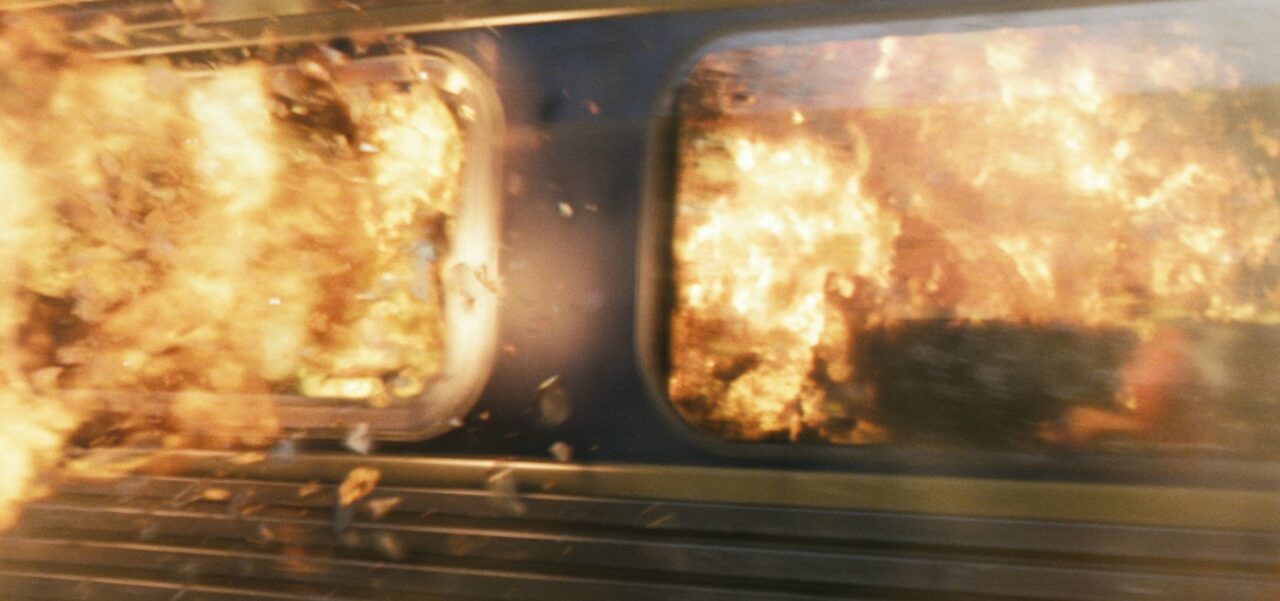We create a violent, visceral, and realistic train crash sequence for Duncan Jones’ thriller.
MPC Vancouver’s VFX Supervisor Erik Nordby and VFX Producer Doug Oddy led the team whose main area of work was to create a violent, visceral, realistic train crash sequence that takes place in broad daylight near downtown Chicago.
The crash itself was a complex scene in which the explosion on the train creates a chain reaction. The bomb explodes in the bathroom of a passenger car, igniting a tanker train traveling next to it. This ends up forcing the passenger train off an overpass and onto the roadway below.
To help craft the sequence around a real location within Chicago, the team focused on aerial footage of the scene, MPC’s VFX supervisor Erik Nordby and VFX producer Doug Oddy then flew to Chicago and met up with the production VFX Supervisor Louis Morin and his team to survey the area. There was a fantastic Red Brick building right in the middle of the location which the team felt would help solidify the sequence for the viewer, and tame some of the chaos of the crash. The Red Brick building was situated at one of the interchanges, down from where the main derailment was meant to occur, which meant a rebuild was necessary. A full day was then spent on set shooting plates for the sequence from multiple angles and distances, surveying rail yards and shooting the ancillary HDR and texture photography. Using these plates MPC’s editorial team then cut together a tight sequence which allowed us to place assets and begin blocking the destruction of the train.
The CG team was confronted with the challenge of finding a balance between highly reflective sun lit trains, and having the fire and destruction read amongst all the reflective surfaces. It was a balance that took time to develop and was something that ended up being tuned shot by shot to fantastic effect.
To avoid confusing the passenger and freight trains, the team labeled each one that would eventually be involved in the accident. Since the passenger train was so long it also need to be rigged in such a way that it could react to the hero destruction animation at the centre of the train. From that point MPC’s animation team worked backwards using the trains final resting place as a starting point. The team then pin pointed where the initial explosion would need to occur in order to kick off the chain reaction. Using these two points the action was then inserted to create a rough timeline of the destruction beats.
With Louis and Duncan’s direction, the scene was then revised to make the beats feel more realistic, and focus the intensity of each shot from an editorial standpoint. The biggest challenge was the apparent weight of the train. Although trains are remarkably heavy, 90% of their weight is actually in their base. Large scale physics and destruction follows a pattern that is fairly easy to replicate, but in this case it was something that needed to be controlled after the fact to keep the heaviness intact, while not making the trains feel over constructed. The exception was always the engine since it is substantially heavier, and its weight is more evenly distributed. Our animation supervisor, Daryl Sawchuk dealt with weighting issues right up to animation lock and beyond.
MPC’s FX team worked on three main areas for the sequences; CG Fire, hard surface destruction & debris, and element based fire & debris. Our FX TD’s had the challenging task of figuring out a balancing act for fire between scale, emissions from within volumes, and the balance between thick black smoke and flames. To tackle the hard surface destruction shots we used destruction software created in-house at MPC. The focus was mainly on concrete retaining walls, guardrails, gravel and wooden railway ties.
The team identified which parts of the trains needed to collide with which part of the environment, controlled the behavior of the materials involved, and set it off.
MPC’s compositing team was tasked with returning the shots to accurate exposure and ensuring detail was maintained in the fire and explosion elements. In order to pull that off the team dropped exposure overall and rebalance the entire scene. Another big challenge for the Composting Supervisor, Arek Komorowski, was to introduce a world of chaos and intensity into the shots. The compositors spent time adding as many chaotic visual cues as possible including dirt on the lens, lens bloom and artifacting, camera and world shake and a great deal of debris. Smoke was also pivotal in the sequence not only to sell the destruction but to help fill the frame and grab the light from the fire and explosions.





